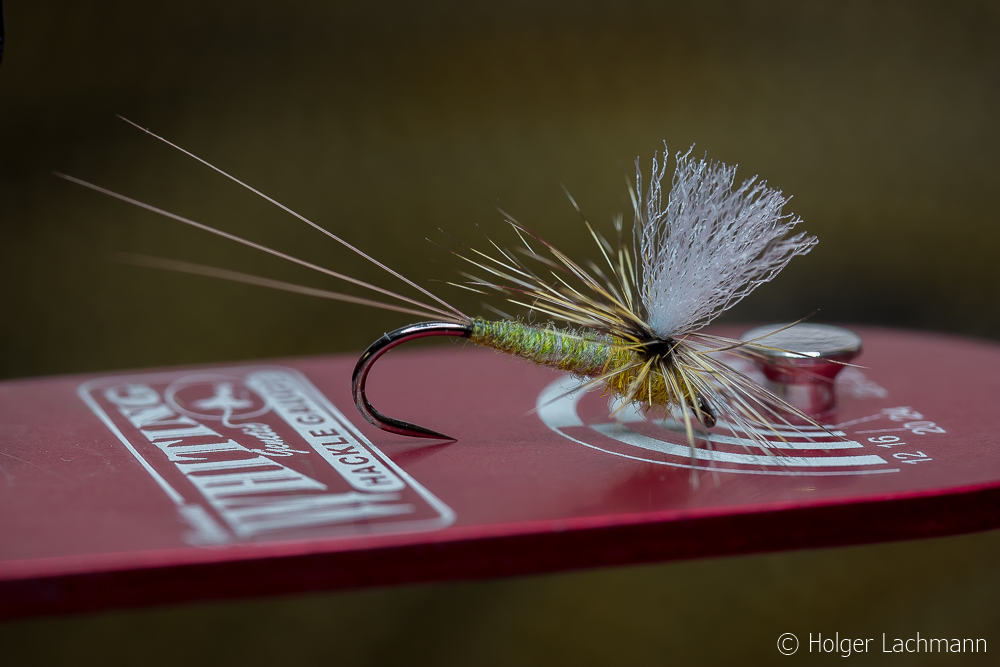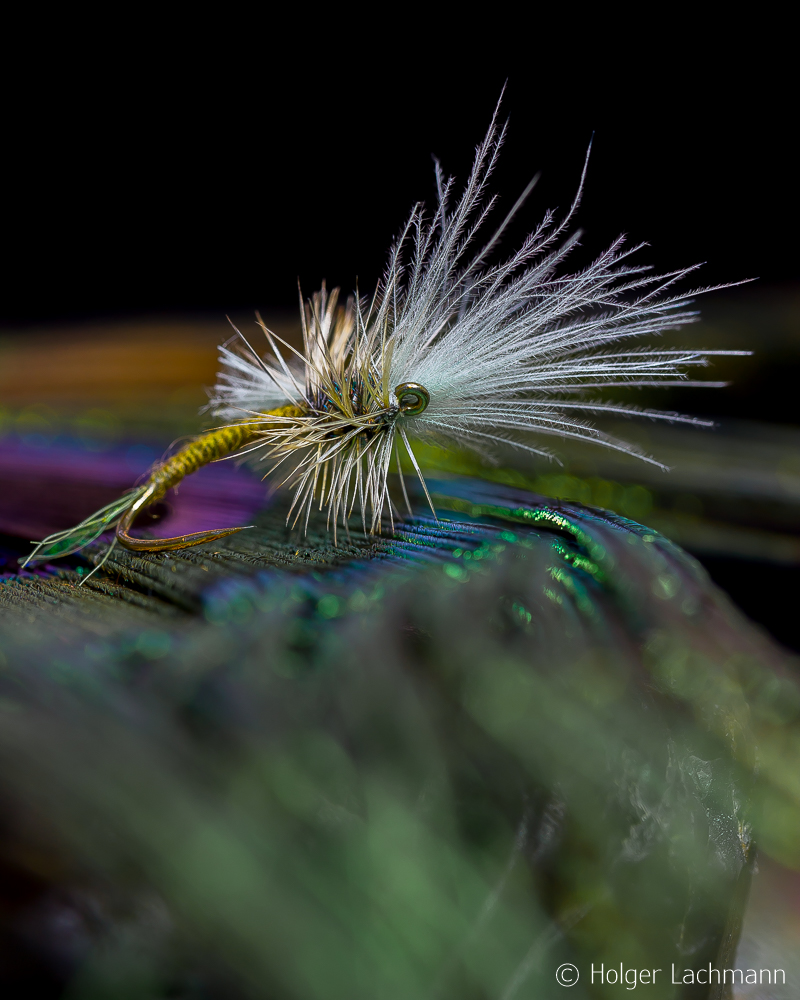
Parachute May Fly





Sometimes, I tie flies without a special purpose. I just think „I want to tie a fly, maybe an emerger would be cool.“ I open some drawers and take a look at my hooks, thinking how the fly (or in this case the ermerger) could look like. Then, I’m thinking about the tail, the ribbing, the abdomen, …., step by step until the fly is finished. I believe when you go this way, you often try something different and that’s the way you improve your skills and knowledge. There are errors, of course, but even errrors improve your knowledge.
A short example: You are sitting in front of your vise and you’ve tied a beautiful mayfly with awesome natural foil wings. Looking really good. You go to the river with the beautiful winged mayfly on the end of your leader. You do the first cast and….. the wings made a propeller out of your fly. Impossible to cast, impossible to fish. The leader is totally twisted after just one cast. Error. You’ve learned something, next time, you will tie your fly different and so you improve your knowledge.
This is my first try on Martin Rudin’s very nice „Leftover Nymph“. It looks very realistic und is not as complicated to tie, as you may think.
Martin did a nice step by step tutorial on his website. It’s in swedish, but you can see clearly how he ties his fly.
Here is the direct link:
There you will find also other nice patterns! It’s worth to check them out!
Sparkle Mayfly. Wings are two colors of CDC (natural and white from Trout Line) with a few strands of very thin flash. There’s a little sparkle in the wings. It’s hard to show that on the picture, in reality, it’s looks very posh! Thorax is normal dubbing, wingcase is made from pheasant and the body is made with Polish Quills, secured with Bug Bond. Tails are synthetic Mayfly Tails. For the hook I’ve used a D23BL # 14 from Trout Line.
Here’s the step by step tutorial for a mayfly nymph pattern, to imitate the BWO for example. This pattern is durable and looks quite like the natural, when drifting through the river. Don’t use too much material when tying these kind of nymphs. You should always keep the slim original in your mind.
This pattern is another example, how usefull uv-resin could be, when tying even small flies for trout and graylig. For this fly I used Clear Cure Goo Hydro, which is highly fluid like water. It’s perfect for smaller patterns and is soacked up by dubbing and feathers, what makes the flies really durable.
Materials:
Put the hook into the vise and wind the flat lead on the hook shank. Do a second layer of lead on the front part like shown on the foto.
Tie in three pheasant tail fibres to imitate the tail of the mayfly.
Tie in a small piece od stretch flex and wind it aroung the hook shank.
Cut a piece out of a pheasant tail feather and tie it in for the wing case.
Take a partridge feather and cut a little piece out of the tip. Then tie the partridge feather in with the tip first.
Dub the thorax, then fold the partridge to the front and catch it with your thread next to the hook eye.
Put a little drop of Clear Cure Goo Hydro on the stem of the partridge feather to join the dubbing with the feather. Cure the CCG Hydro with the uv torch. The hackle stem and the dubbing are joined together now. Nothing will ever slip and the legs will stay as shown on the photo.
Fold the pheasant to the front and catch it with your tying thread. Put a little drop of Clear Cure Goo Hydro on the wing case and cure it with the uv torch.
The wing case is now very durable after curing the CCG Hydro. If you want a shiny wing case, that’s what I prefer, put a second drop of CCG Hydro on the wing case and cure it. Now, the mayfly nymph is ready for fishing.
tight lines
Holger Lachmann